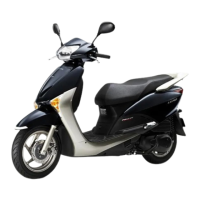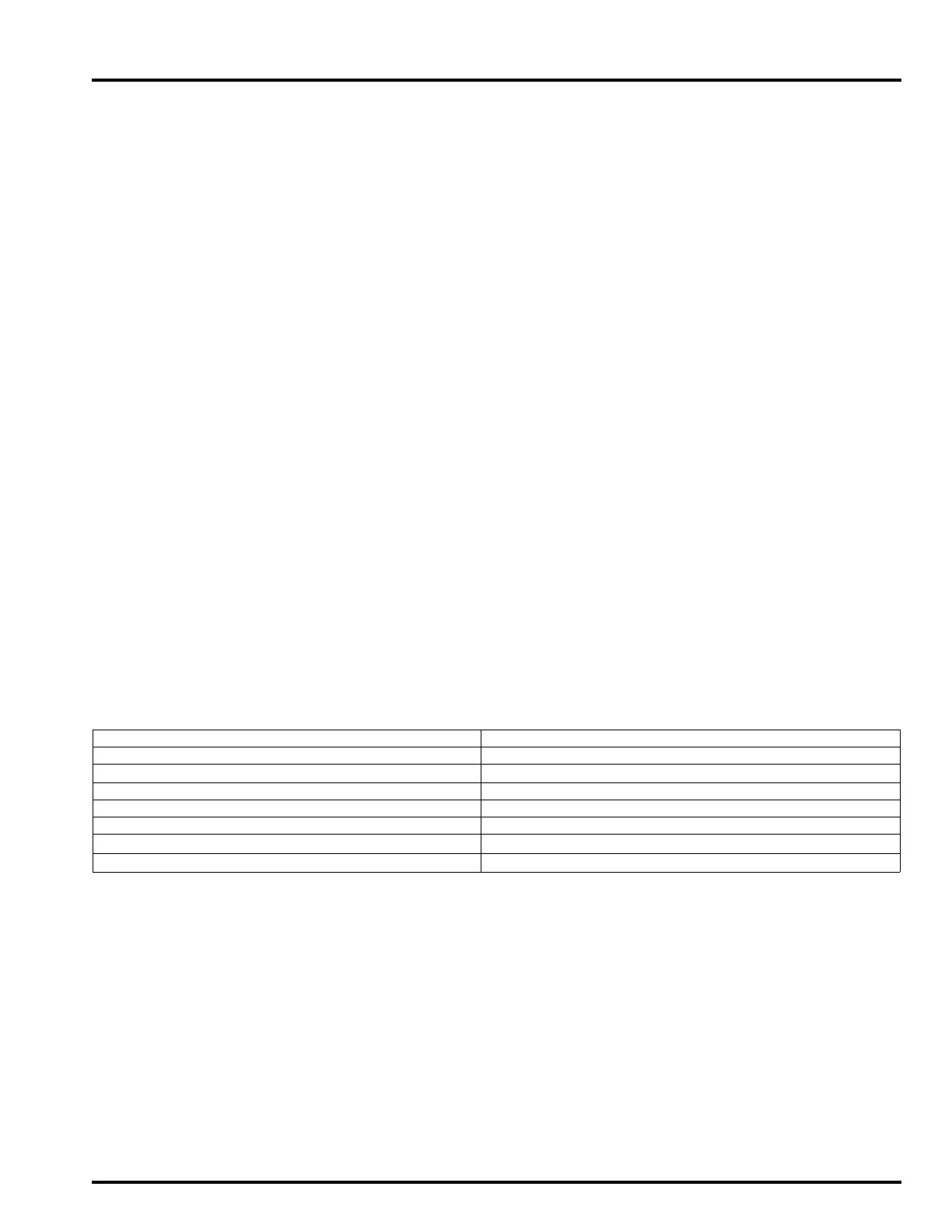FUEL SYSTEM (Programmed Fuel Injection)
6-3
SERVICE INFORMATION
GENERAL
• Before disconnecting fuel hose, relieve pressure from the system by starting the engine with the fuel pump connector
disconnected (page 6-32).
• Bending or twisting the control cable will impair smooth operation and could cause the cable to stick or bend, resulting
in loss of vehicle control.
• Work in a well ventilated area. Smoking or allowing flames or sparks in the work area or where gasoline is stored can
cause a fire or explosion.
• Do not apply commercially available carburetor cleaners to the inside of the throttle bore, which is coated with molyb-
denum.
• Do not snap the throttle valve from full open to full close after the throttle cable has been removed. It may cause incor-
rect idle operation.
• Seal the cylinder head intake port with tape or a clean cloth to keep dirt and debris from entering the intake port after
the throttle body has been removed.
• Do not damage the throttle body. It may cause incorrect throttle valve operation.
• Prevent dirt and debris from entering the throttle bore and fuel feed hose, clean them using compressed air.
• The throttle body is factory pre-set. Do not disassemble in a way other than shown in this manual.
• Do not loosen or tighten the white painted nut of the throttle drum. Loosening or tightening it can cause throttle body
malfunction.
• Always replace the packing when the fuel pump is removed.
• It is impossible to disassemble the fuel pump after removing it.
• The PGM-FI (Programmed Fuel Injection) system is equipped with the Self-Diagnostic System described on page 6-13. If
the MIL (Malfunction Indicator Lamp) blinks, follow the Self-Diagnostic Procedures to fix the problem.
• When checking the PGM-FI, always follow the steps in the troubleshooting flow chart (MIL trouble shooting:page 6-22).
• The PGM-FI system is provided with fail-safe function to secure a minimum running capability even when there is any
trouble in the system. When any abnormality is detected by the self-diagnosis function, running capability is secured by
making use of the numerical values of a situation preset in the simulated program map. It must be remembered, how-
ever, that when any abnormality is detected in injector the fail safe function stops the engine from the standpoint of
protecting it.
• Refer to PGM-FI system location (page 6-5).
• A faulty PGM-FI system is often related to poorly connected or corroded connectors. Check those connections before
proceeding.
• When disassembling the programmed fuel injection parts, note the location of the O-rings. Replace them with new ones
upon reassembly.
• Use a digital tester for PGM-FI system inspection.
• Refer to procedures for fuel level sensor inspection (page 21-10).
SPECIFICATIONS
ITEM SPECIFICATIONS
Throttle body identification number GQQ2A
Engine idle speed
1,700 ± 100 min
-1
(rpm)
Throttle grip freeplay 2 – 6 mm (0.08 – 0.24 in)
Fuel injector resistance (at 20°C /68°F) 9 – 12 Ω
PCV solenoid valve resistance (at 20°C /68°F) 30 – 34 Ω
Fuel pressure
294 kPa (3.0 kgf/cm
2
, 43 psi)
Fuel pump flow (at 12 V)
98 cm
3
(3.3 US oz, 3.5 lmp oz) minimum/10 seconds

